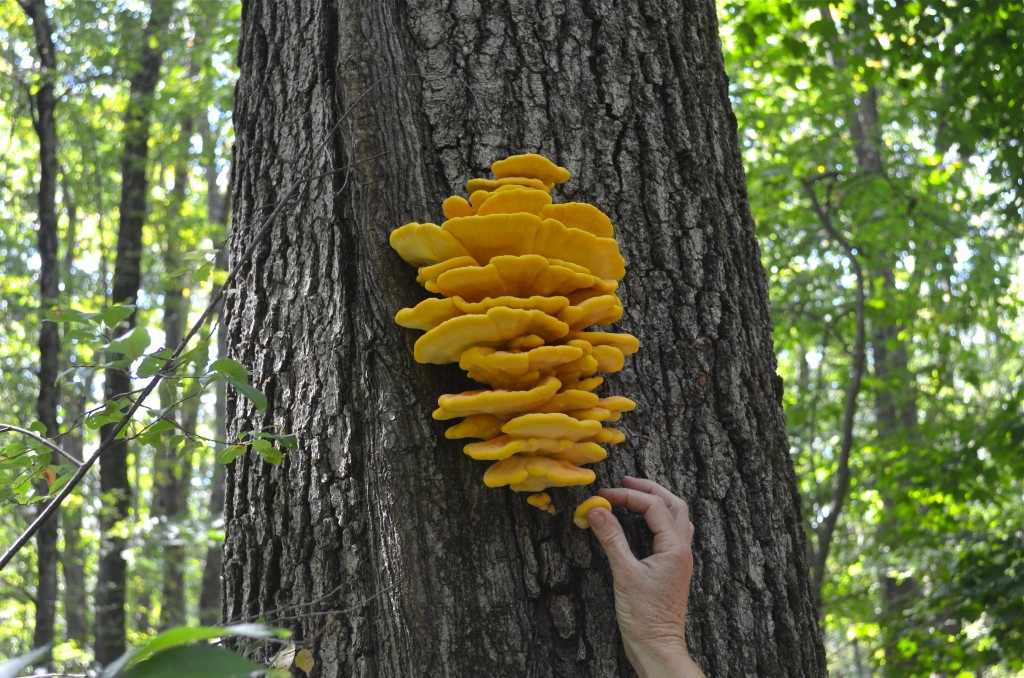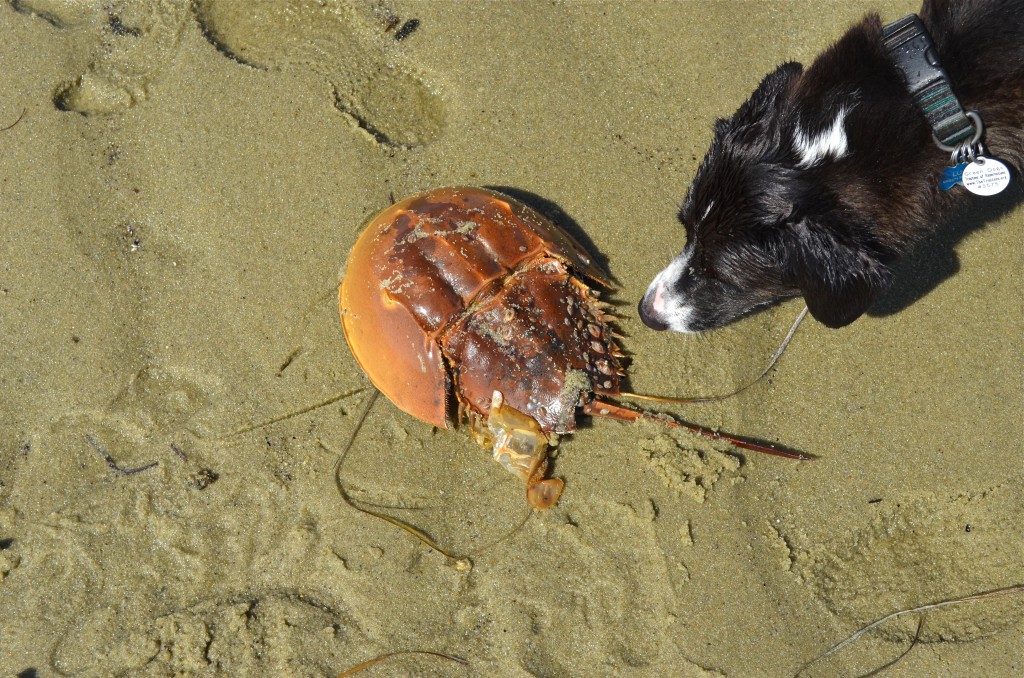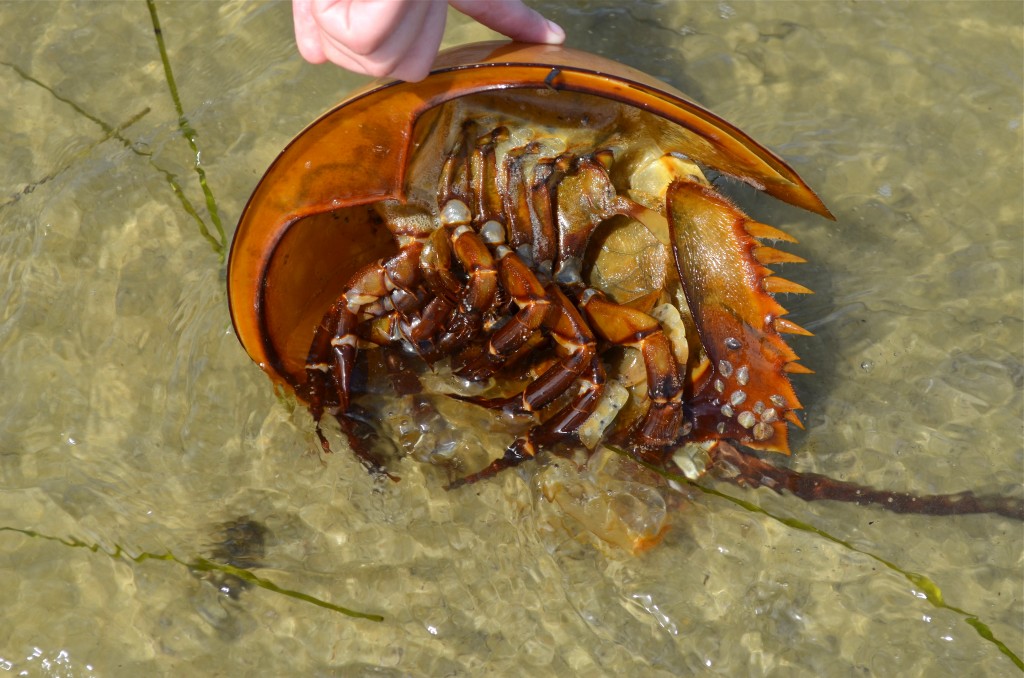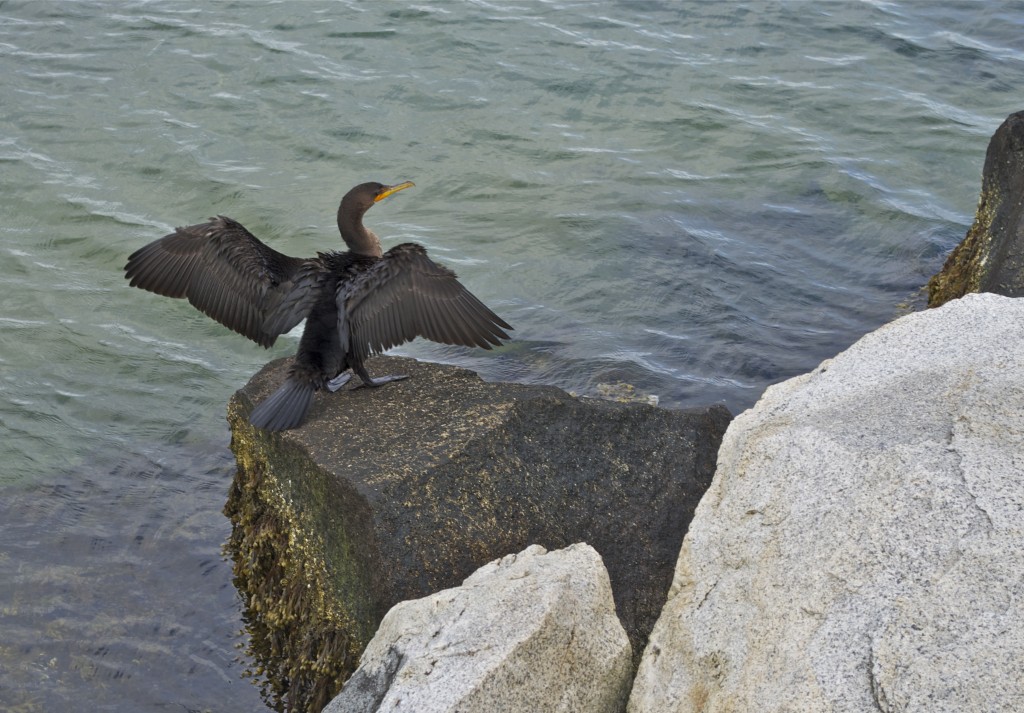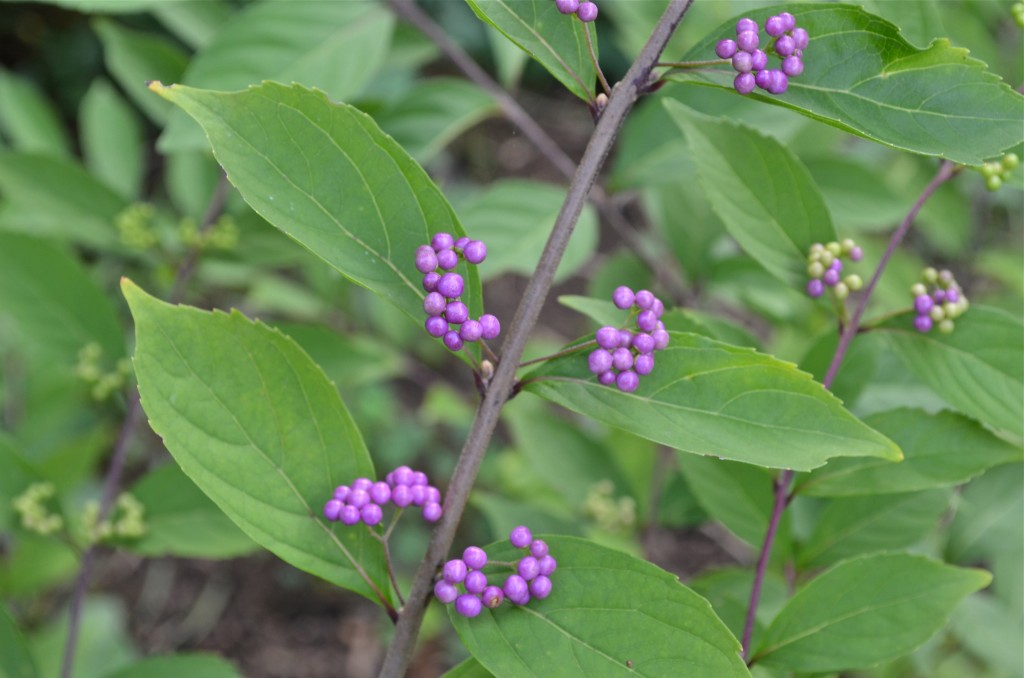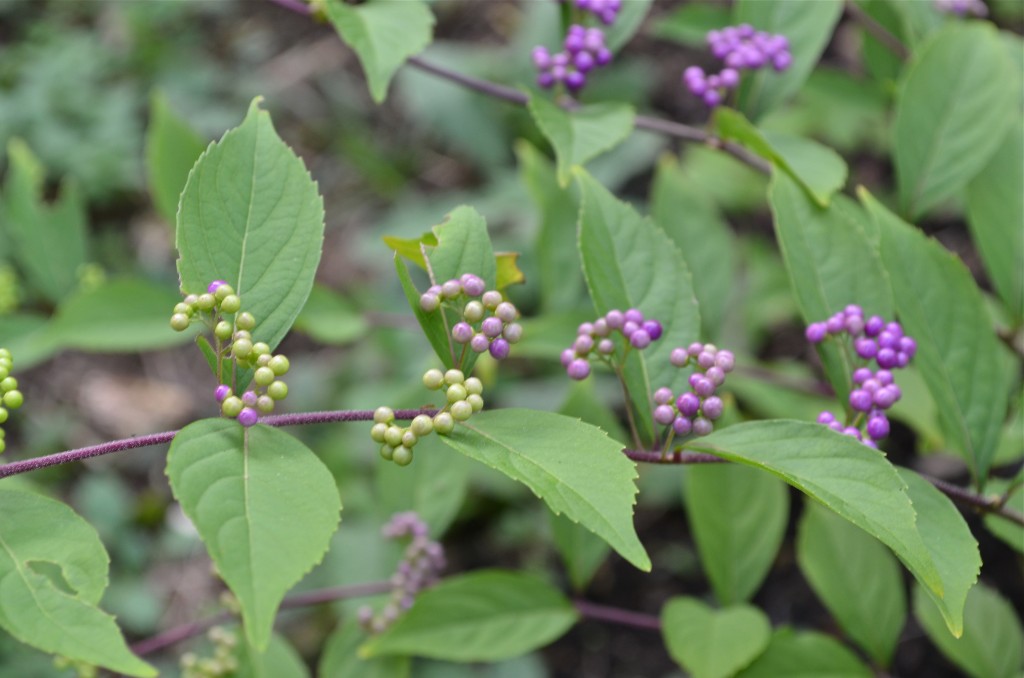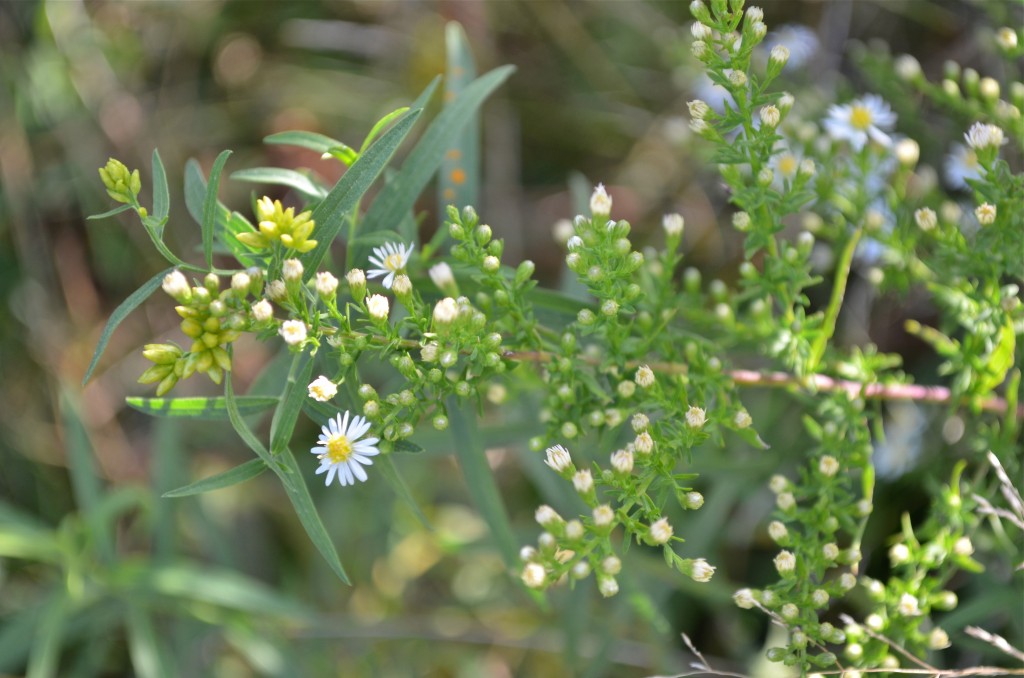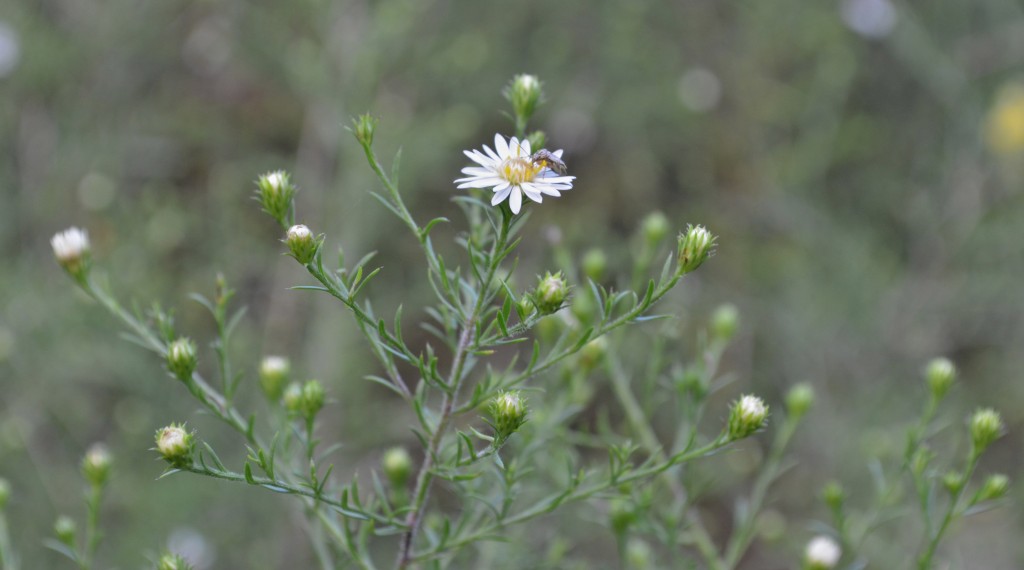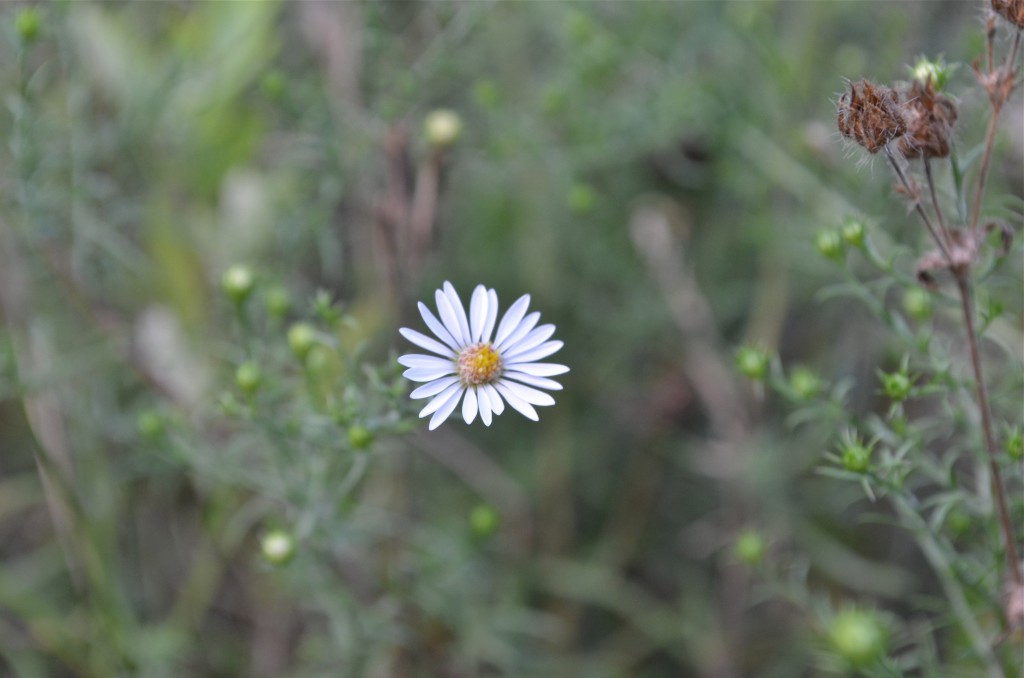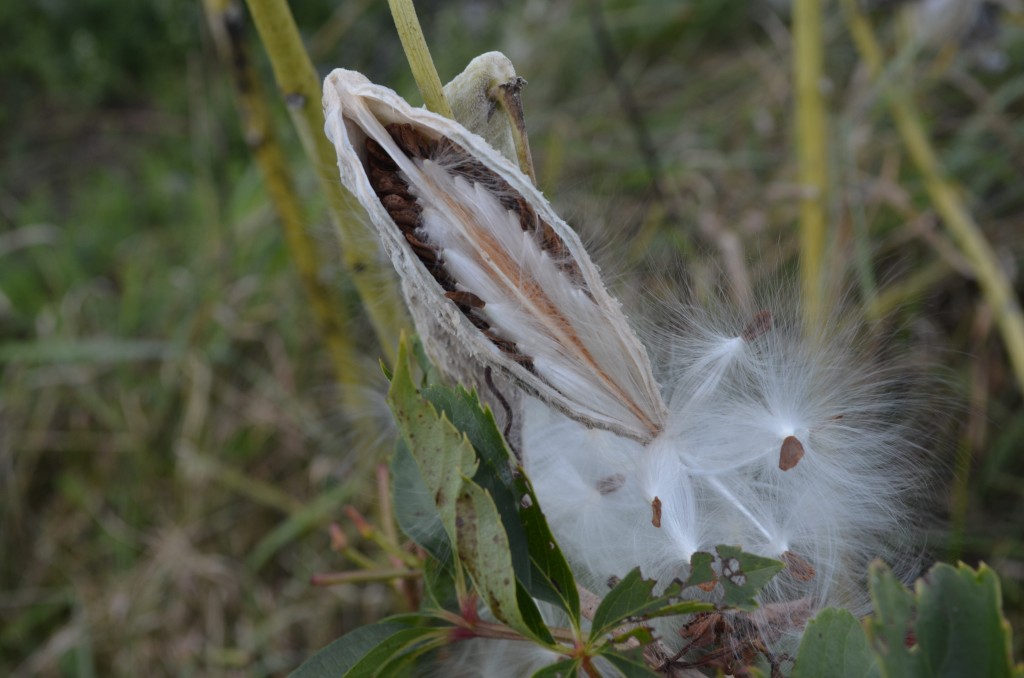 The milkweed is moving on to seeds. The pods are splitting and spilling. This great meadow is full of milkweed, but I never noticed any monarch caterpillars or chrysalises…
The milkweed is moving on to seeds. The pods are splitting and spilling. This great meadow is full of milkweed, but I never noticed any monarch caterpillars or chrysalises…
Monthly Archives: September 2012
Wasp Nest
Nestled in the spurge and poison ivy, a cozy wasp nest. There are two categories of wasps: solitary and social. The singletons don’t construct nests, and they’re all fertile. The socials live in colonies with thousands of their buddies and often only the queen and males are fertile; the rest are sterile female workers. Also, most wasp species are parasitic; i.e., they lay their eggs directly into the body of a host insect. Ew.
Chicken Mushroom
Rugosa Rose
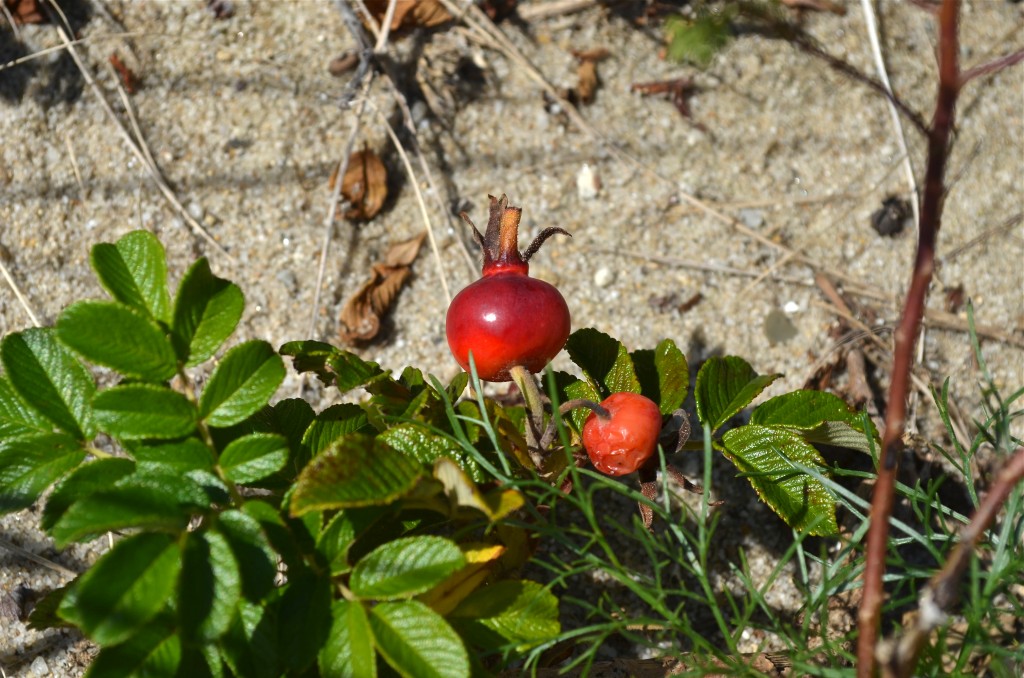 We went to Provincetown, not too long a drive away, but a whole new ecosystem where the very air announced you had arrived somewhere different. Here’s a native rose, and a few other things — a horseshoe crab seen at low tide, a cormorant drying its wings between dives. Rose family. Native to Asia.
We went to Provincetown, not too long a drive away, but a whole new ecosystem where the very air announced you had arrived somewhere different. Here’s a native rose, and a few other things — a horseshoe crab seen at low tide, a cormorant drying its wings between dives. Rose family. Native to Asia.
Rugosa Rose (Rosa rugosa)
Beautyberry
These had feathery little flowers, and now with the cold weather, it’s time for the berries! Dr. Wesley Whiteside gave me these plants because I admired them in his garden, bright purple on bare branches in late October — they were just little twigs but they’ve done well. An important fall survival food for birds, when other sources are gone. Apparently, you can chop up a plant, boil and strain it, mix it with oil and beeswax to make a fabulous mosquito repellent. Also you can make jelly from the berries! (And yet, you can also use the leaves to make a poison to stun fish. Hm.) There is an indigenous form, American Beauty Berry, which has berries with no stems, clustered closer to the branch. This kind is native to Japan. Verbena family.
Japanese Beautyberry (Callicarpa japonica)
Pilewort
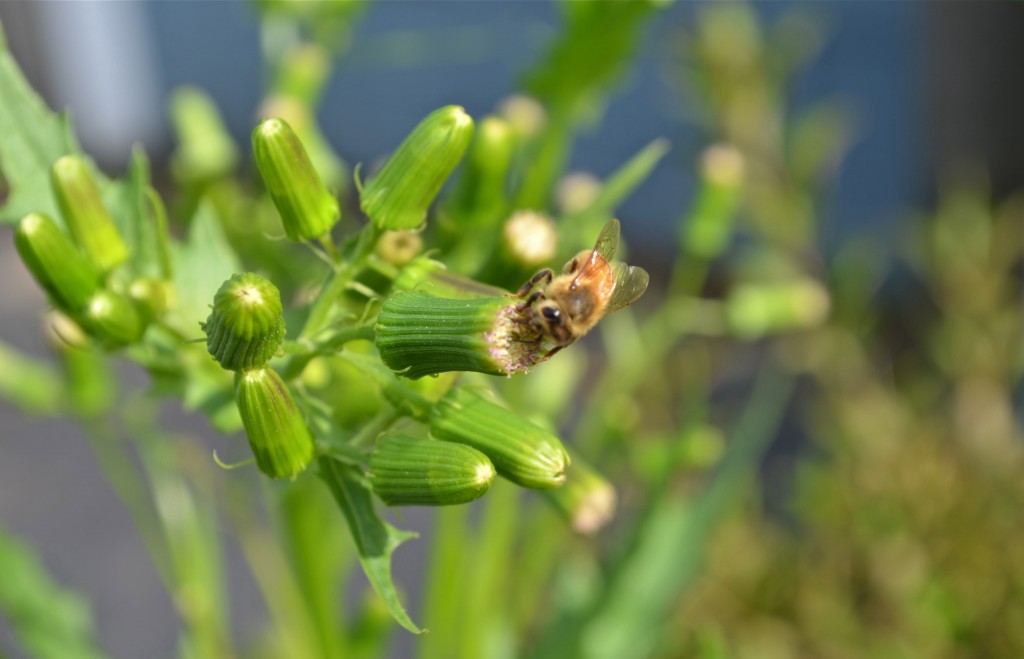
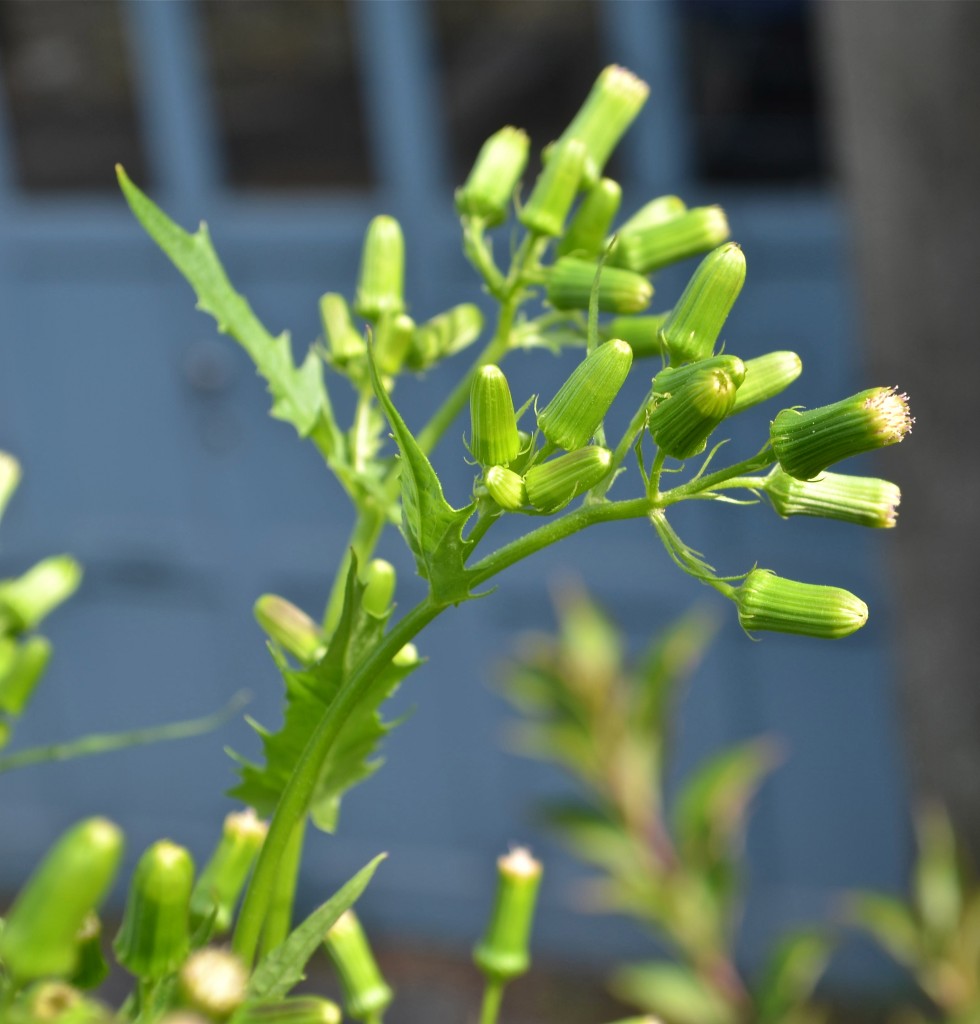 The good thing about being a neglectful gardener is, suddenly you discover a robust new weed right in your own yard. (Actually, I guess not everyone would consider that a good thing.) I had been waiting for this to bloom, but as it turns out, for pilewort, this is full bloom. Also called fireweed because it likes disturbed areas, especially where there’s been a fire. Animals avoid eating it because the foliage is bitter and bad-smelling. Composite family. Native annual.
The good thing about being a neglectful gardener is, suddenly you discover a robust new weed right in your own yard. (Actually, I guess not everyone would consider that a good thing.) I had been waiting for this to bloom, but as it turns out, for pilewort, this is full bloom. Also called fireweed because it likes disturbed areas, especially where there’s been a fire. Animals avoid eating it because the foliage is bitter and bad-smelling. Composite family. Native annual.
Pilewort, Fireweed (Erechtites hieracifolia)
Smooth Aster
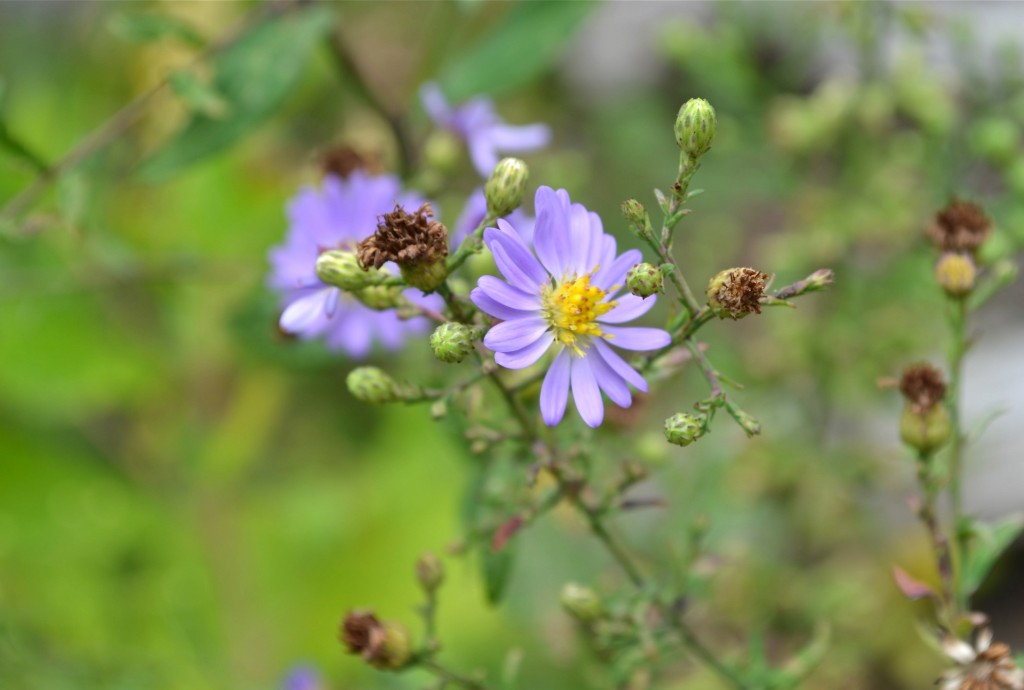
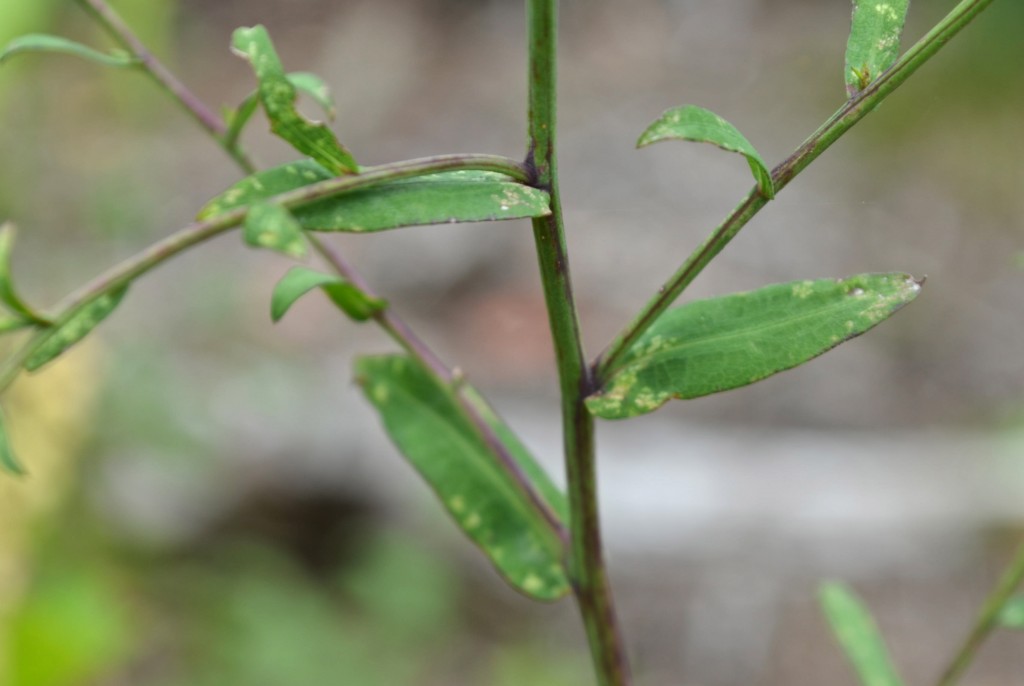 Showier blossoms than some of the raggedy varieties that are more common. Up to 3 feet tall. It’s called smooth because the stems and foliage are not hairy or rough like most other asters. Another distinguishing characteristic is the way the leaves clasp the stem. (I don’t usually post the photos I take of the leaves because they’re not pretty, but this would be a more helpful identification tool if I did, because for many plants, leaf formation is the key to figuring out what it is…) Aster family. Native perennial.
Showier blossoms than some of the raggedy varieties that are more common. Up to 3 feet tall. It’s called smooth because the stems and foliage are not hairy or rough like most other asters. Another distinguishing characteristic is the way the leaves clasp the stem. (I don’t usually post the photos I take of the leaves because they’re not pretty, but this would be a more helpful identification tool if I did, because for many plants, leaf formation is the key to figuring out what it is…) Aster family. Native perennial.
Smooth Aster (Aster laevis)
Pink Turtlehead
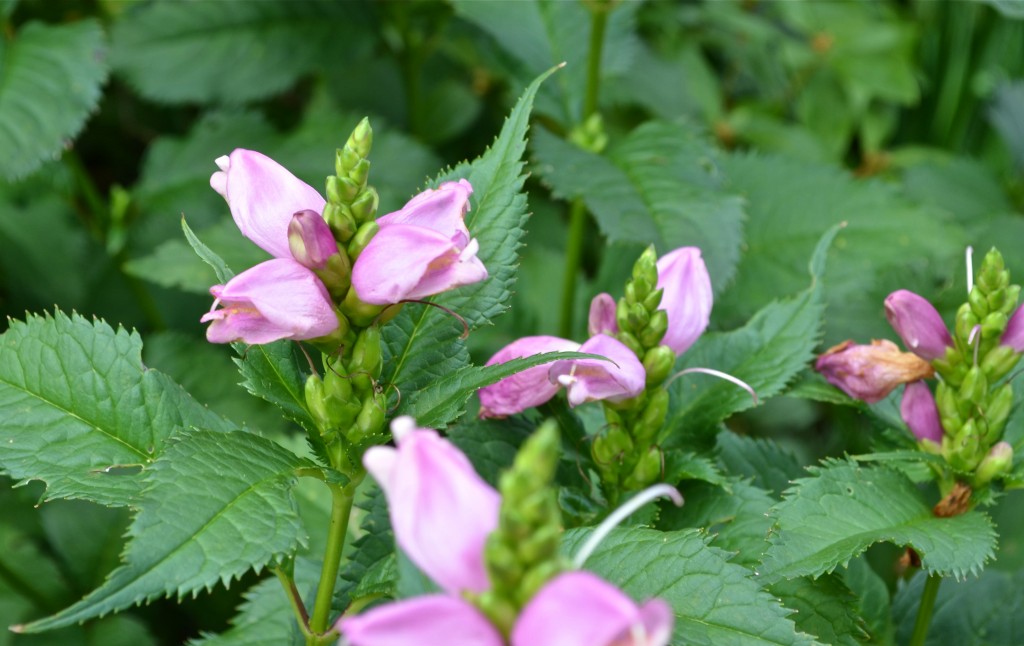 After seeing white turtlehead growing wild at Charles River Peninsula, it was easy to recognize the pink version in a garden on the Wellesley campus. It’s an unusual flower to see this late in the season; it looks like something that would be out in the spring. Bitter foliage avoided by animals. Pollinated by bumblebees. Figwort family. Native perennial.
After seeing white turtlehead growing wild at Charles River Peninsula, it was easy to recognize the pink version in a garden on the Wellesley campus. It’s an unusual flower to see this late in the season; it looks like something that would be out in the spring. Bitter foliage avoided by animals. Pollinated by bumblebees. Figwort family. Native perennial.
Pink Turtlehead (Chelone obliqua speciosa)
Small White Aster
Awl Aster
A new flower appears at Centennial, I’m on it like a spider discovering something new in the web. There is a large area covered with these, just starting to come into bloom. (There are many similar kinds of asters, difficult to distinguish, and they randomly hybridize. In the reference books and sites I consult, there is some disagreement about what the common name of this aster is, although I think the latin name identification is correct.) Composite family. Native.
Awl Aster, Heath Aster, Frost Aster (Aster pilosus)


